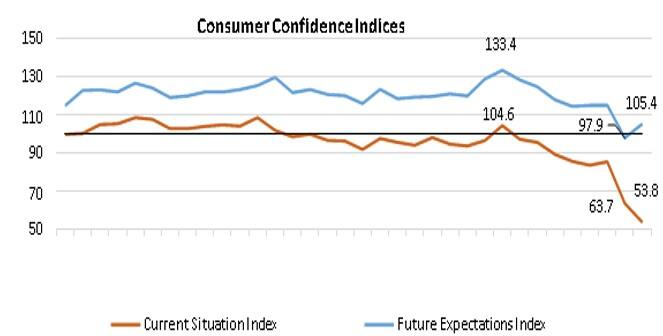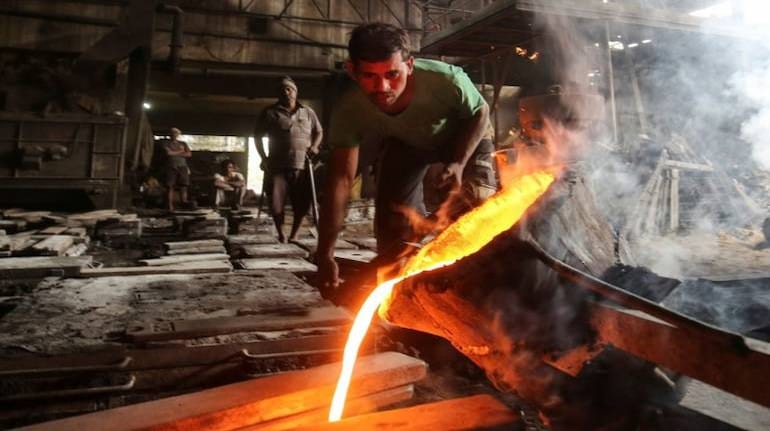For the Indian economy to gather pace in its economic recovery path and give the requisite boost to demand, it is imperative that marketers take notice of the absence of impulse buying behaviour of consumers and strategise accordingly
As anticipated, the gross domestic product (GDP) numbers for the June quarter (Q1 FY21) showed a major contraction in the Indian economy.
It posed a grim picture with the Indian economy contracting by 23.9 percent in the first quarter, the most drastic contraction witnessed over decades. The worrisome GDP numbers for India have been corroborated by Gita Gopinath, chief economist, International Monetary Fund (IMF), who stated that as per the IMF estimates, India's internationally comparable quarter-on-quarter GDP shrank the highest amongst G20 countries at 25.6 percent.
The data by the National Statistics Organisation (NSO) showed that other than the agricultural sector, all other sectors had witnessed a contraction. Construction sector saw a sharp decline of 50.3 percent, manufacturing slipped by 39.3 percent, electricity, gas and other utility services contracted by 7 percent.
The worst-hit was trade, hotels, transport and communication which contracted by 47 percent.
The silver lining on the wall was the performance of the agricultural sector, which was kept outside the ambit of the lockdown.
Due to a better than normal monsoon, essential services such as farming activities and transportation of foodgrains, etc, being permitted, the agricultural sector witnessed a growth of 3.4 percent in the June quarter.
What is adding to the worry is that these GDP numbers do not take into account the impact felt by the country's vast informal workforce. The informal sector once accounted for in the revised estimates could manifest into a deeper contraction for the economy.
However, keeping in mind the lockdown, we are sure that these numbers come as no surprise to anyone.
Looking ahead, data for economic indicators in August 2020 does bring some cheer and a ray of hope for the Indian economy. Economists are deliberating in terms of the country witnessing a V-shaped recovery as the economy slowly and steadily unlocks and regulations are eased.
The Purchasing Managers' Index (PMI) for manufacturing for August 2020 rose to a six-month high of 52, pointing towards a turnaround in industrial activity (a figure above 50 is reflective of expansion).
According to the Nomura India Business Resumption Index (NIBRI), there appears to have been an uptick in business normalisation in August 2020 with other economic indicators showing a recovery.
Power and fuel demand, railway freight and mobility indices showed a marginal improvement whilst the passenger car segment has bounced back with a vigour.
The Google Mobility Index, which analyses visits to retail shops, workplaces, parks, etc, showed a 2 percent increase in visits to supermarkets, warehouses, farmers' markets, specialty food shops in August 2020.
However, overall unemployment rate in August jumping to 8.35 percent -urban and rural unemployment rising to 9.83 percent and 7.65 percent, respectively - from 7.43 percent in July 2020 has marred the bright picture being painted on the canvas.
According to the IHS Markit, the PMI index indicated an expansion in August 2020 due to output and new orders expanding at its fastest pace since February 2020. An uptick in demand from domestic markets has given the push to production and input purchase. However, one cannot forget the fact that with coronavirus creating a fear in the minds of people of not really being sure of what the future holds, consumers are holding onto cash and not willing to indulge in discretionary spending behaviour.
For the economic recovery to gather pace and give the requisite boost to demand, it is imperative that marketers take notice of the absence of impulse buying behaviour of consumers and strategise accordingly. The COVDI-19 pandemic has put a pause on consumers urge to splurge and adversely impacted impulse purchase due to the fear of uncertainty lurking in their minds.
McKinsey in July indicated that consumer sentiments were at a low and reflective of the uncertainty created by the virus. There has been a shift to mindful shopping including some trading down of value. The Reserve Bank of India (RBI) in its Consumer Confidence Survey report published on August 6 stated that consumer confidence had plummeted in July 2020 with the Current Situation Index (CSI) showing an all-time low. The positive from the survey was that Future Expectations Index (FEI) is charting its way back into the positive territory.

Source: Reserve Bank of India
Thus, the novel coronavirus has led to a behavioural change in consumers and changed consumer preferences. With new hygiene and contagiousness concerns, people are unwilling to venture into shopping malls and marketplaces. Though the Google Mobility index did show a rise of 2 percent in August, retailers should be visionary enough and help consumers navigate seamlessly between an offline and online experience and invest in an omni-channel world.
With consumers hesitant to step out of their homes to shop, there has been an absence of the demonstration effect of consumers.
Demonstration effect denotes the consumption habits of individuals to imitate consumption trends adopted by others. Keeping up with the Joneses is a thought far away from the minds of consumers today. Thus, the unprecedented situation created by the virus requires organisations to go back to the drawing board and restrategise.
With the festival season coming up and keeping in mind that consumer behaviour is influenced deeply by cultural factors, brands and companies could explore utilising the 'Nudge theory' in wooing back customers. Nudges are physical cues which influence individuals to behave in a certain way, without categorically promoting of any behaviour. Nudge principles have been actively utilised in commercial marketing earlier too.
While the anticipation is that consumers would only be willing to step out of home once the vaccine has been launched, marketers should rebuild, re-strategise and rethink for the festive season.
With localised lockdowns and the virus surfacing back, Q2, 2020 could be reflective of a slight uptick but all hopes are pinned on Q3, 2020. The festive season slated in Q3 this year is expected to bring cheer and respite from the pandemic-linked slumber.
Brands are pinning a lot of hopes on the festive season and advertisement campaigns reflecting empathy and positive sentiments of the world being able to win over the virus can help win back customer trust and reshape consumer sentiments.
Festive season beginning from August 2020 and extending until January 2021 is the time for brands to give the much needed nudge to discretionary spending and drive back GDP numbers for the Indian economy.
Agreeably, rising unemployment numbers are a cause of worry and indicate that the formal sector has restrained from hiring, while jobs in rural areas have remained stagnant. At this point of time, it is important to reflect on the negative impact that reverse migration has brought about on production activities. Sectors such as construction and manufacturing which have shown a contraction of 50.3 percent and 39.3 percent, respectively, have also been hit drastically by labour shortage.
One-third of the labour that had migrated back in April has still not returned to the cities and industrial areas. Yes, some corporate leaders did come up with out of box measures to bring back labour and employees by paying for their return flight and train journeys, offering housing facilities etc, but the pandemic does force us to rethink on this account.
The pandemic has reinforced the importance of unskilled and semi-skilled labour, and labour shortage will only drive up the minimum wages.
Isn't it only fair that corporate houses and the government should look at providing the basic necessity of food, clothing, housing and a minimum basic income to this section of society too?
Like they say, an unprecedented situation requires out of line strategies and out of box thinking. While the government is already working on providing stimulus measures to improve ease of doing business for producers and ease of living especially for the lesser strata of society, it is high time that corporate stalwarts in all fairness improve working and living conditions for its labour force. This will help bring back migrant workers, fuel up production and act as a booster on the supply side. Fingers crossed, festival season and the nudge theory in conjunction will help bring back positive consumer sentiments and thus propel the demand side of the economy.
Thus, in a way with both demand and supply getting the requisite shot in the arm, Q3 and Q4, 2020, will witness the Indian economy in the orbit of economic growth and moving fast on the track of a V-shaped recovery path.
(Dr Jagadish Shettigar is Professor, Economics, Birla Institute of Management Technology, Greater Noida, and Dr Pooja Misra is Associate Professor, Economics, Birla Institute of Management Technology, Greater Noida)
Follow our coverage of the coronavirus crisis here.

_2020091018165303jzv.jpg)






